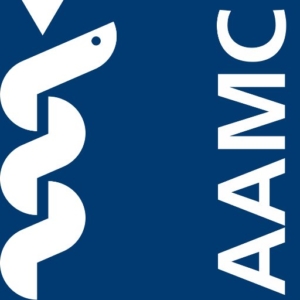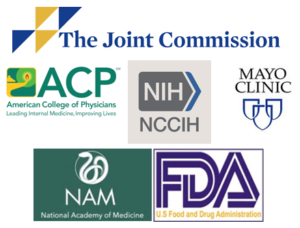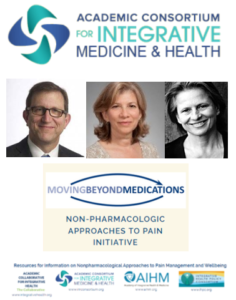MDs and Opioids: Medical schools still downplay non-pharma, integrative approaches
February 6, 2018
 by John Weeks, Publisher/Editor of The Integrator Blog News and Reports Editor’s note: This analysis article is not edited and the authors are solely responsible for the content. The views and opinions expressed in this article are those of the authors and do not necessarily reflect the official policy or position of Integrative Practitioner. The Association of American Medical College (AAMC) recently reported on the response of their member institutions to the nation’s crisis in chronic pain care. Is medical education changing? The AAMC shared results of a telephone survey of curriculum deans “to assess their current or anticipated plans in addressing the opioid epidemic.” A summary of findings was published as “Addressing the Opioid Epidemic: U.S. Medical School Curricular Approaches.” Given that multiple pain guidelines have promoted non-pharmacologic approaches as a key strategy to undo the opioid damage, one might assume that new content on such strategies would be highlighted. Yet examination of the document and follow-up queries to AAMC found only a murmur of interest. The exchange with AAMC staff suggested that the nation’s medical schools will not soon be equipping new medical doctors with evidence and experience toward a recommended treatment path if we are ever to get out of the opiate-darkened woods. Scavenging the 3-page AAMC document for evidence of responsive curricular action related to non-pharma care yielded precisely zero mentions of non-pharmacologic or of integrative strategies. Reported survey findings focused on such areas as the need for faculty development in new prescribing practices, the challenges of already crammed curricula, developing simulation methods, and finding appropriate community partners. Non-pharma was not in the picture. The 21 survey questions in 4 domains instead focused on “the nature of pain (D-I); pain assessment and measurement, including assessment of risk for substance abuse disorders (SUD); management of pain, including SUD treatment and opioid overdose; and the context of pain and SUD.” These were broken into 31 competencies. One positive, integrative-leaning signal was a push for “teaching interprofessionally.” The theme was noted twice. Yet again, the AAMC was not proactively suggesting that acupuncturists or chiropractors might be on these interprofessional teams. Meantime however, the overall tone was upbeat, commending medical schools for “adapting their curricula to address the complexity of the opioid epidemic.”
by John Weeks, Publisher/Editor of The Integrator Blog News and Reports Editor’s note: This analysis article is not edited and the authors are solely responsible for the content. The views and opinions expressed in this article are those of the authors and do not necessarily reflect the official policy or position of Integrative Practitioner. The Association of American Medical College (AAMC) recently reported on the response of their member institutions to the nation’s crisis in chronic pain care. Is medical education changing? The AAMC shared results of a telephone survey of curriculum deans “to assess their current or anticipated plans in addressing the opioid epidemic.” A summary of findings was published as “Addressing the Opioid Epidemic: U.S. Medical School Curricular Approaches.” Given that multiple pain guidelines have promoted non-pharmacologic approaches as a key strategy to undo the opioid damage, one might assume that new content on such strategies would be highlighted. Yet examination of the document and follow-up queries to AAMC found only a murmur of interest. The exchange with AAMC staff suggested that the nation’s medical schools will not soon be equipping new medical doctors with evidence and experience toward a recommended treatment path if we are ever to get out of the opiate-darkened woods. Scavenging the 3-page AAMC document for evidence of responsive curricular action related to non-pharma care yielded precisely zero mentions of non-pharmacologic or of integrative strategies. Reported survey findings focused on such areas as the need for faculty development in new prescribing practices, the challenges of already crammed curricula, developing simulation methods, and finding appropriate community partners. Non-pharma was not in the picture. The 21 survey questions in 4 domains instead focused on “the nature of pain (D-I); pain assessment and measurement, including assessment of risk for substance abuse disorders (SUD); management of pain, including SUD treatment and opioid overdose; and the context of pain and SUD.” These were broken into 31 competencies. One positive, integrative-leaning signal was a push for “teaching interprofessionally.” The theme was noted twice. Yet again, the AAMC was not proactively suggesting that acupuncturists or chiropractors might be on these interprofessional teams. Meantime however, the overall tone was upbeat, commending medical schools for “adapting their curricula to address the complexity of the opioid epidemic.”  This oversight regarding non-pharmacologic approaches came despite recommendations in a key document that was said to anchor the survey, the National Pain Strategy having been a key foundation for survey development. A prior analysis of that US Department of Health and Human Services resource was more inclusive. “Licensed integrative health care practitioners” are repeatedly recommended by the NPS as collaborators in bringing the nation to its senses on pain care. Following an e-mail query, Lisa Howley, PhD, Med, the AAMC’s senior director for strategic initiatives and partnerships, shared that while the AAMC was limited in what they could include in the 3-page briefing, non-pharma “was certainly integrated within the survey.” For instance, she added, included among the 31 competencies were some to “identify and describe potential pharma and non-pharma treatment options, including education regarding the risks and benefits associated with each of the these available treatment options.”
This oversight regarding non-pharmacologic approaches came despite recommendations in a key document that was said to anchor the survey, the National Pain Strategy having been a key foundation for survey development. A prior analysis of that US Department of Health and Human Services resource was more inclusive. “Licensed integrative health care practitioners” are repeatedly recommended by the NPS as collaborators in bringing the nation to its senses on pain care. Following an e-mail query, Lisa Howley, PhD, Med, the AAMC’s senior director for strategic initiatives and partnerships, shared that while the AAMC was limited in what they could include in the 3-page briefing, non-pharma “was certainly integrated within the survey.” For instance, she added, included among the 31 competencies were some to “identify and describe potential pharma and non-pharma treatment options, including education regarding the risks and benefits associated with each of the these available treatment options.”  In a follow-up email, I detailed the extent to which integrative strategies are prioritized as first-line strategies by the Joint Commission, Mayo Clinical Proceedings, American College of Physicians, the National Academy of Medicine. Howley added that the AAMC is “seeing increases in our members’ attention to integrative and complementary approaches to healthcare including pain management.” Yet for the AAMC, potential value of non-pharmacologic and integrative approaches remains, in newspaper lingo, “below the fold.” This single-issue analysis of the AAMC’s brief takes nothing away from what the AAMC members are doing. Certainly, the aberrant overuse of opioids by doctors in the USA where 80% of the world’s opioids are consumed means there is a great deal that needs to be addressed that doesn’t touch on alternative, non-pharmacologic, clinical approaches. The good news going forward is that the integrative voice that the AAMC is most likely to listen to -- the Academic Consortium for Integrative Medicine and Health – is prioritizing the topic. The Consortium, with its 70 members based in AAMC member institutions, is a natural AAMC partner.
In a follow-up email, I detailed the extent to which integrative strategies are prioritized as first-line strategies by the Joint Commission, Mayo Clinical Proceedings, American College of Physicians, the National Academy of Medicine. Howley added that the AAMC is “seeing increases in our members’ attention to integrative and complementary approaches to healthcare including pain management.” Yet for the AAMC, potential value of non-pharmacologic and integrative approaches remains, in newspaper lingo, “below the fold.” This single-issue analysis of the AAMC’s brief takes nothing away from what the AAMC members are doing. Certainly, the aberrant overuse of opioids by doctors in the USA where 80% of the world’s opioids are consumed means there is a great deal that needs to be addressed that doesn’t touch on alternative, non-pharmacologic, clinical approaches. The good news going forward is that the integrative voice that the AAMC is most likely to listen to -- the Academic Consortium for Integrative Medicine and Health – is prioritizing the topic. The Consortium, with its 70 members based in AAMC member institutions, is a natural AAMC partner.  The Consortium co-authored Moving Beyond Medications pocket guide. They helped provoke the Joint Commission to highlight integrative practices in pain guidelines. Their members developed and they are promoting a new white paper, co-authored by Heather Tick, MD and Arya Nielsen, PhD, LAc, entitled Evidence-Based Nonpharmacologic Strategies for Comprehensive Pain Care. Consortium chair Rob Saper, MD, MPH, recently represented integrative treatment in a public webinar on the opioid crisis for the Institute for Healthcare Improvement. The Consortium has aggregated a quality website and resource center with multiple evidence summaries. Now the Consortium needs to step directly into the AAMC’s knowledge gap. The AAMC will serve their members, future doctors, and the public, by doing what the National Pain Strategy charges them to do. They should reach out directly to collaborate with multiple licensed integrative health professionals to help educate the next generation of medical doctors. This crisis will not be resolved by focusing on opioids. Rather, the AAMC must open the hearts and minds of these doctors to the non-pharma, integrative practices and interprofessional partners with whom they can radically change the dominant approach to working with individuals with chronic pain.
The Consortium co-authored Moving Beyond Medications pocket guide. They helped provoke the Joint Commission to highlight integrative practices in pain guidelines. Their members developed and they are promoting a new white paper, co-authored by Heather Tick, MD and Arya Nielsen, PhD, LAc, entitled Evidence-Based Nonpharmacologic Strategies for Comprehensive Pain Care. Consortium chair Rob Saper, MD, MPH, recently represented integrative treatment in a public webinar on the opioid crisis for the Institute for Healthcare Improvement. The Consortium has aggregated a quality website and resource center with multiple evidence summaries. Now the Consortium needs to step directly into the AAMC’s knowledge gap. The AAMC will serve their members, future doctors, and the public, by doing what the National Pain Strategy charges them to do. They should reach out directly to collaborate with multiple licensed integrative health professionals to help educate the next generation of medical doctors. This crisis will not be resolved by focusing on opioids. Rather, the AAMC must open the hearts and minds of these doctors to the non-pharma, integrative practices and interprofessional partners with whom they can radically change the dominant approach to working with individuals with chronic pain.



















SHARE